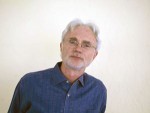Title
Let’s be honest: Juilliard has been letting its hair down lately. The sedimentary fortress of bygone days has been stormed in a sort of architectural coup d’état, revealing a shiny, glassy, and pointy new side of the School. Spying on live dance rehearsals no longer demands covert tactics, as the new Kaufman dance studio—seemingly suspended in mid-air above the refurbished Alice Tully Hall—is visible to any curious Broadway pedestrian. Meanwhile, the hardworking instrumentalists a few floors above can now take a break from their practice and enjoy a nice long gaze at the busy triangular courtyard down below. Add to that a pair of cameo appearances in recent Hollywood productions—The Soloist and High School Musical 3—and you’ve got yourself a sleek, sexy new Juilliard that’s finally “with it.”
Body
Enter Axiom, Juilliard’s exciting new contemporary music ensemble, caught in the vicissitudinous spirit of free love and orange lobbies. The brainchild of bassoonist and recent Juilliard graduate Justin Brown, Axiom carved its niche in the musical establishment primarily through student initiative. With the help of conductor Jeffrey Milarsky, Axiom became integrated into the Juilliard curriculum, while consciously preserving its grass roots through the continued emphasis on student participation and self-government. Milarsky—hardly your traditional baton-wielding autocrat—seems to revel in this democratic arrangement.
“I lean on a lot of very experienced students,” Milarsky said in a recent interview. “Most of the pieces themselves are programmed by the advanced students in the group who have a real desire to be involved. That’s never going to change.”
Given the heterogeneous body of pieces produced in the last 100 years, it is certain that no Axiom concert will ever resemble the one before. Through student-election and Milarsky’s ratification, Axiom performs programs representing the oxymoronic “classics of the 20th century.” For Milarsky, though, the term “classics” is employed without a trace of irony.
“I’ve always felt that this music will last forever, just the same way that Bach or Schubert lasts. I’m passionate about that,” he said. “If Beethoven’s Sixth is a classic, I absolutely think the Le marteau sans maître of Boulez is a classic. I think these pieces will outlast all of us.”
Without the benefit of hindsight, the challenge for the programmer of contemporary classics is to choose repertoire that seems to possess timeless characteristics, potentially appealing to any number of hypothetical future audiences. For many, the work of John Adams has that potential.
“He’s very hard to categorize, and I hesitate to use words that people put in program notes, because he’s such a facile composer,” Milarsky explained. “I consider him a classic because I feel like he’s a force of nature. Whatever he writes, he writes with such a sense of style and integrity that it’s kind of overwhelming.”
Considering his elusive and alluring style, Adams was a shoe-in classic on Axiom’s list of composers to showcase this semester. However, given the wealth and diversity of his output, picking a representative group of works to fit within the constraints of a single concert program is virtually impossible. Axiom’s solution? To hit the town with two entirely different all-Adams programs.
First Stop: Alice Tully Hall
O.K., so it won’t take a tie-dyed party bus to transport Juilliard students here on December 10, but it’s a worthy stop nonetheless. The new Tully is an acoustical and visual miracle. Its reverberative amber womb is a haven for sounds the pianist Anne-Marie McDermott once described as “fat, rich, and buttery,” and its glassy exterior force field offers an aesthetic model for future concert halls to be built during man’s colonization of Mars.
The program, showcasing Adams’s artistic versatility, will serve well the continued exploitation of Tully’s creamy acoustics. The quirky robotics of Scratchband and the Schoenberg-meets-Bugs Bunny zaniness of the Chamber Symphony frame a pair of more serious, contemplative works—the recent String Quartet and Six Songs by Charles Ives, arranged by Adams for voice and orchestra.
Second Stop: Le Poisson Rouge
Two days after its elegant first date, Axiom will shed its white ties and floor-length gowns and escort Juilliard downtown to Greenwich Village, the birthplace of the Beat generation and ground-zero for 1960s counterculture. After decades of gentrification, the Village’s once antiauthoritarian spirit typifying ’60s bohemian folklore has been commodified, clinging to life in the ironic habitat of iPod playlists and vintage fashion. In the center of it all is Le Poisson Rouge, standing in the ashes of the old Village Gate, where Coltrane used to play and Jacques Brel was premiered. Attempting to defy the constraints of artistic identity, L.P.R. has staged a role reversal. It is now classical music that offers a vehicle for countercultural trends, allowing formerly buttoned-up conservatories like Juilliard to burst onto the scene.
According to Milarsky, “There’s a real connection between Juilliard and L.P.R. now through Axiom. Axiom is the gel. Students can now explore a very different side of themselves. That’s really, really exciting.”
With collars open, Axiom will cap-off its two-stop tour with another Adams program—Road Movies, Phrygian Gates, and John’s Book of Alleged Dances—exploring the more intimate side of his output. Luckily for the audience at Le Poisson Rouge, there might not be a better ensemble for this music. In the words of L.P.R. music director Ronen Givony, “They seem to me like one of the very best, if not the best young new music group here in town.”





